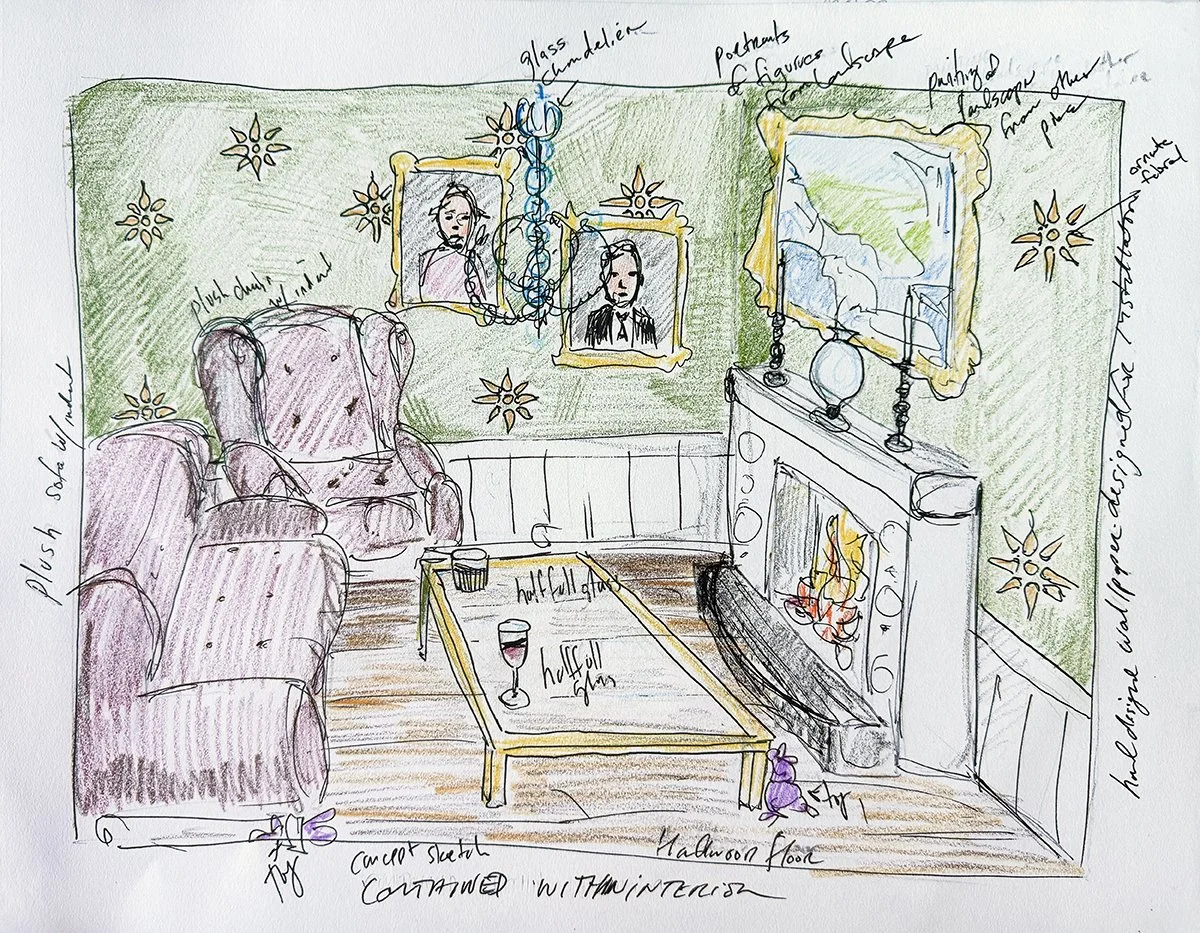This world is not one of wonder.
MIKA DROZDOWSKA
Magical realism is a literary and artistic genre where the ordinary and the extraordinary coexist seamlessly within the same narrative. In this genre, elements of fantasy or the supernatural are woven into the fabric of the real world, presented as natural occurrences without surprise or explanation from the characters. Magic blends effortlessly with the mundane, often blurring the boundaries between reality and imagination. The genre highlights the coexistence of the everyday with the miraculous and frequently explores themes of identity, memory, and history, using fantastical elements as metaphors for deeper truths or social reflections.
While magical realism allows us to delve into the strange and inexplicable, the world we inhabit today reveals that the unimaginable often arises not from a magical order, but from the crossing of boundaries marked by cruelty, ignorance, and apathy. Though these occurrences may resemble the fantastical, it is the real-world consequences of war, displacement, and global crises that give rise to the truly surreal aspects of life. In this context, borders—once symbols of safety and identity—have become rigid and oppressive, deepening divisions rather than fostering connection.
This is not a world of wonder, but one of constant upheaval, uncertainty, and hardship. The dreams and phantasmagorias we once sought have been replaced by the harsh reality of human-inflicted suffering. While the lines between reality and fantasy may still blur, the source of these distortions is no longer supernatural; it is human-made, forcing us to continuously adapt to a world reshaped by our own actions.
John Moran’s installation Contained Within subtly evokes the contradictions and surrealities of contemporary life, much like the aesthetic tendencies of magical realism, where the lines between the real and the fantastical blur. In such works, the ordinary world intertwines with the extraordinary, and reality itself seems suspended—sometimes eerily beautiful, other times brutal and unsettling. This two-part installation invites the viewer into spaces where the boundaries between the tangible and the imagined dissolve, offering the fantastical not just as a visual escape, but potentially a moment of respite. Is this world of fantasy merely a break in the ongoing physical or mental flight? A brief pause in the relentless movement of existence, providing sanctuary from the chaos of displacement, loss, and struggle?
The first piece presents a seemingly perfect yet empty interior—an affluent family living room, bathed in dim light and adorned with ornamental wallpaper, an elegant chandelier, and meticulously arranged furniture. However, the absence of people is palpable. Traces of their lives linger in forgotten toys, a half-drunk glass of wine, and the indentation of a body on the sofa. These abandoned objects serve as symbols of the impermanence of the spaces we occupy. In today’s chaotic world, where borders are not fading but instead becoming more rigid, and where geopolitical strategies, conflicts, and alliances shift unpredictably, it has become increasingly difficult to establish lasting roots. We are torn by wars, displacements, and oppressions, each forcing us to leave behind what was once familiar, abandoning spaces we once called home in search of new, perhaps safer ones—if such places still exist.
visualization for the interior landscape of container two
In the second piece, the landscape begins to shift, adding another layer of tension. Although filled with color and movement, the space feels suspended in an unsettling moment. The two figures—one sitting by a tree, the other gazing into a wishing pool—may not be there by choice. Are they in this landscape of nature willingly, or is this a brief pause in their escape? Are they caught between borders, in a liminal space before crossing another boundary or experiencing another pushback? Or is this moment a fleeting reprieve offered by nature, a breath of relief before the next displacement? This subtle tension invites the viewer to consider the constant struggle between civilization and nature—an ongoing battle that has shaped human history as we’ve tried to master nature, only to find ourselves in need of its sanctuary.
To enhance this sense of tension, Moran uses a single perspective from the viewing window to create a false sense of distance and perspective. A stream runs from deep in the background toward a wishing pool at the forefront of the space. This perspective evokes the feeling of being caught between two worlds: the distant, unreachable past and the immediate, uncertain present. The flow of water, symbolizing movement and time, also carries a sense of stagnation, as though the figures are trapped in an inescapable cycle of longing and searching, poised at the edge of a boundary they may never cross.
Both pieces create self-contained worlds, drawing the viewer into spaces that feel both real and imagined. Time and space shift, creating a pause in the relentless flow of life, where the ordinary and the extraordinary, tension and calm, coexist. In this way, the works resonate with stories that highlight small, often silent but deeply human gestures that define our existence.
Through this approach, the works explore themes of memory, absence, and the tension between idealism and reality—much like stories that reflect the world as it is, with all its contradictions. The figures, sculpted from molten glass, appear fragile yet eternal—frozen in time, yet still full of movement. The kinetic elements—water, light, and sound—imbue the spaces with life, making them dynamic and ever-changing.
These installations invite the viewer to reflect on the worlds we inhabit, the traces we leave behind, and the spaces we search for in a reality increasingly defined by uncertainty.









